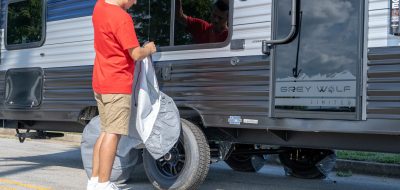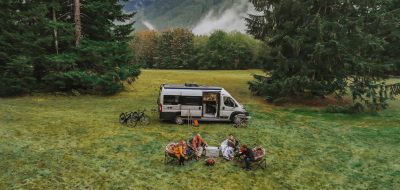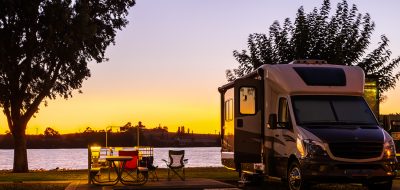Late fall with the leaves flaming with color, blue skies with marshmallow clouds, gentle breezes blowing through the camp ground. Sounds like a great day to take a hike on some of the trails around the camp ground!
But what happens when the clouds turn black, the winds turn cold and the rain or snow starts to fall and you are miles from camp? Our ancestors had a name for it they called it “exposure” or plain, old freezing to death! Today we call it Hypothermia and in the mild stages we all have felt the effects of it.
Hypothermia starts out slowly with just being “cold.” The body begins to pull blood to the core of the body to keep vital organs like the heart and brain warm. Shivering begins next and the extremities become very cold and begin to loose feeling and dexterity. Confusion begins as the brain cools and the metabolism slows. If you can’t start warming up soon, the body actually begins to feel more normal and shivering stops; you feel relaxed and euphoric. Soon you are sleepy, and you lay down to “rest,” and, if not warmed, you never wake up. Painless way to go, but it tends to cut short the rest of your camping trips!
What can be done to prevent Hypothermia while camping or for that matter anywhere else? Think about it, you can be just as cold sitting and watching the Steelers play football on Heinz Field as you can out ice fishing. Lets start with layers. Comfortable clothing with several layers is often the key. Wearing old fashion long johns may not be stylish but might save your life. And not just one or two, wear something like a long johns, flannel shirt, lite jacket and then coat and parka shell. On your legs/feet start with the long johns and nice warm sox (wool is best if you aren’t allergic) then pants and then maybe wind or rain pants, comfortable waterproof boots finish things off. Remember to keep your hands and head warm, to; you loose much of your heat from them. Good gloves and caps/hats can make the difference between misery and comfort.
Also for even more protection the outer layer should be waterproof or Gortex® type fabric, water cools you faster than still air, and wind and water is faster yet!
Movement may also help. Remember the bodies first response is shivering which is nothing more than muscle movement. Start walking back to camp! Get inside and out of the wind! Being well fed and well hydrated also helps. And no, Beer doesn’t count. In fact, any alcohol cools you more rapidly, save it for back at camp! When sitting around the campfire, I personally enjoy a big mug of hot chocolate with a little peppermint Schnapps ® mixed; it tastes like warm peppermint Patties®! Oh, wait, lets not get side tracked.
I am sure by now most of you are saying but when I start moving with all those clothes on, I will start sweating, and you may, so, open the zippers and buttons, or, better yet, take a small back pack for the extra clothes. Put what you don’t need while walking in the backpack. You can also put some things like an emergency blanket, matches, bug juice, maps and other items in it beside your clothes, but that is a whole other topic for another day!
Put a little planning into that hike and you will be more comfortable and much safer!
Your obedient servant,
Gary Smith, Jr.






Pingback: pinyourincome reviews
Pingback: Heat Exhaustion, stop it before it gets worse!
Tom Gardner
Great article. Since I have been a survivor of hypothermia I always carry a survival kit, and a pack with rain gear, energy bars, and water when hiking. My survival kit contains the following:
1. Ziplock bags
2. Moleskin
3. Gauze
4. Space Blanket preferrably heavy duty
5. Variety of bandages
6. Small tube sunscreen
7. Non-antibacterial soap
8. Water purification tablets
9. Ibuprofen
10. Duck tape wrapped around a pen
11. Iodine
12. Small multi-tool/flashlight combo
13.Tweezers
14. Safety pins
15. Krazy glue
16. Compass
17. Mirror
18. Fire starter/waterproof matches
19. Whistle
20. Small plastic rain parka
I never leave home without it.
Pam
I found this to be extremely helpful. Living in Western Pennsylvania in the winter, I see a lot of people who could benefit from a good lesson in how to dress and go out in the cold.